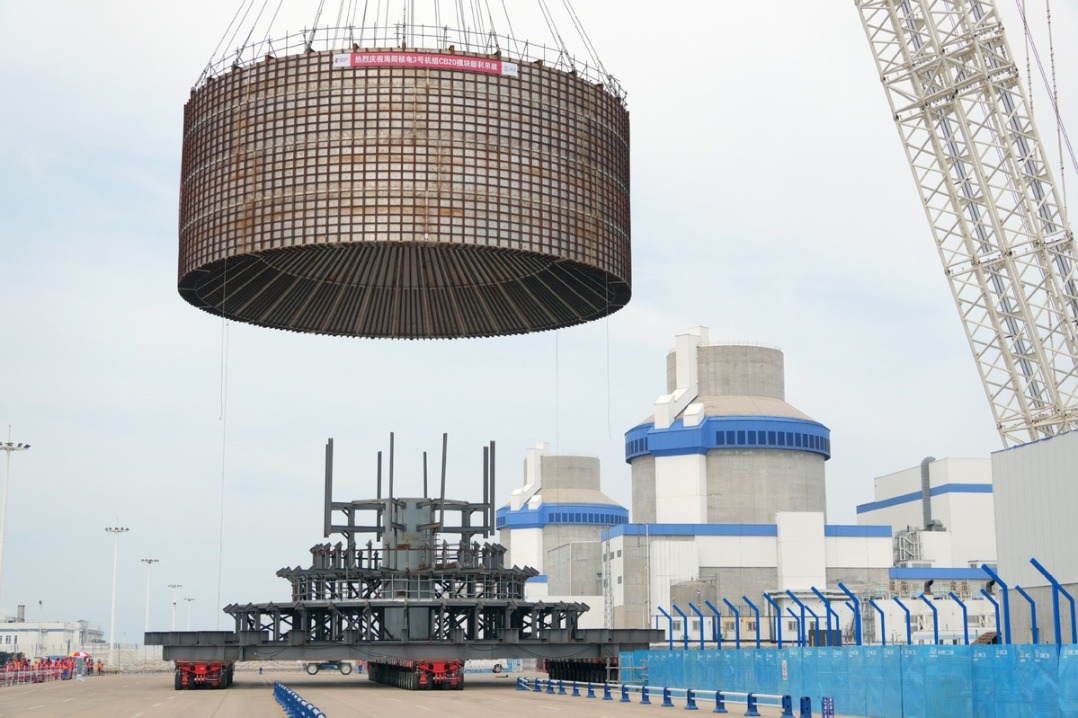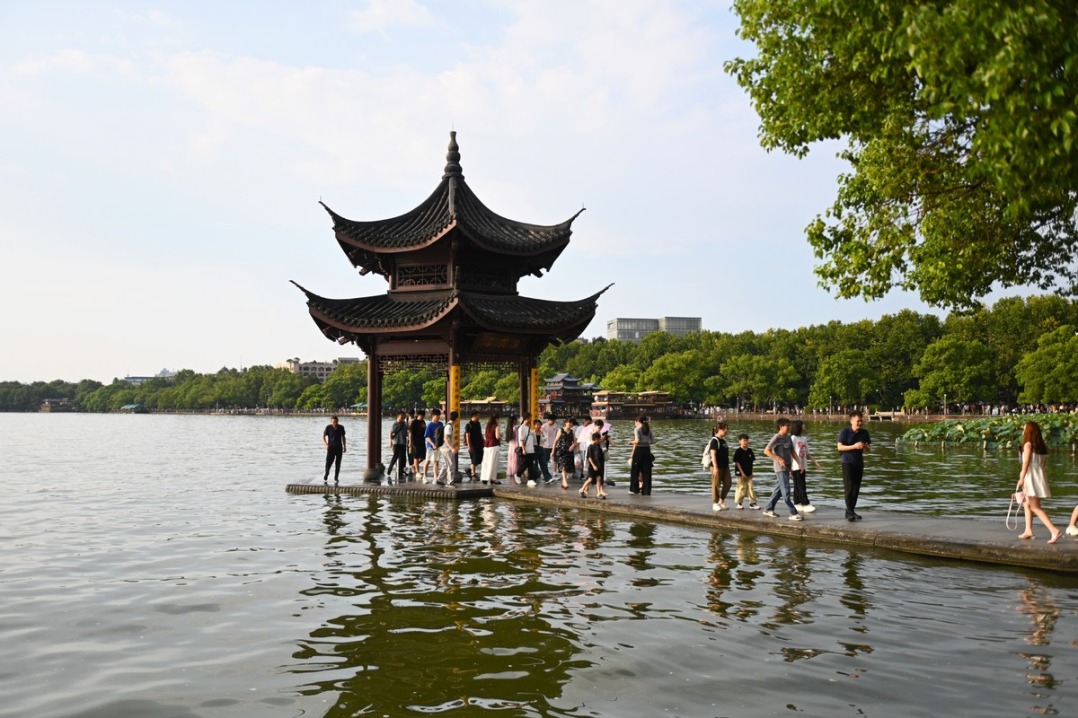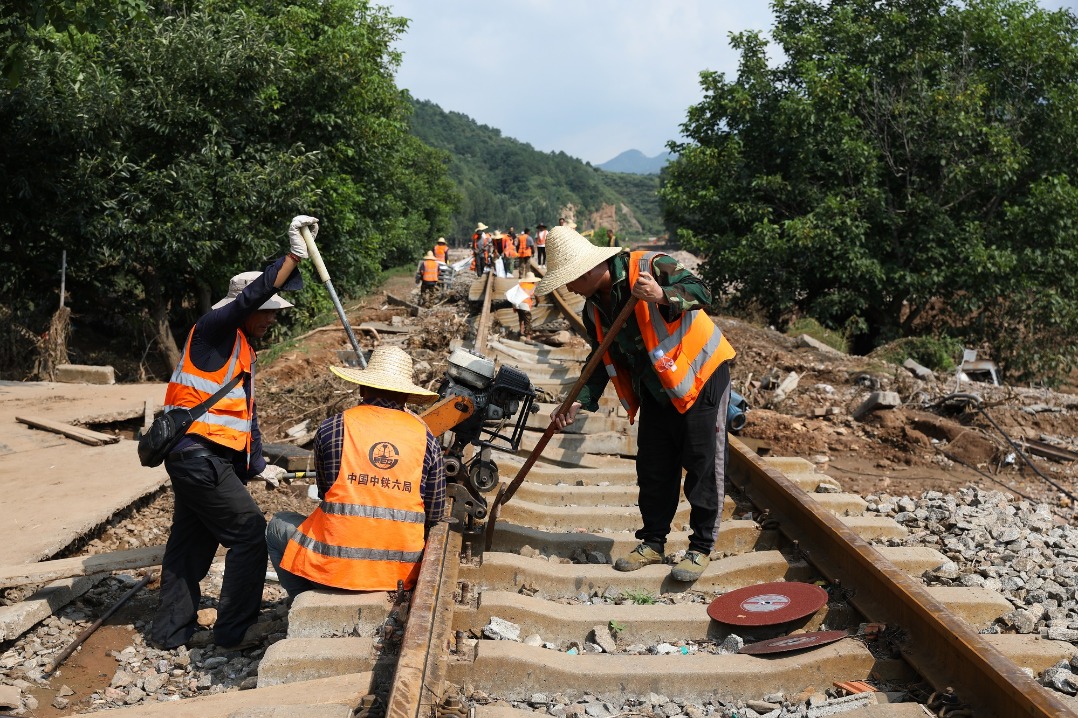Cemetery is of iconic significance in Singapore

The month of April traditionally marks Qingming, or Tomb Sweeping Day, one of the most important festivals in China. It is a day to honor relatives and ancestors that have passed away by visiting and cleaning their graves. It is also a custom that Chinese immigrants brought with them when they settled down in Southeast Asia and beyond some few hundred years ago.
In cemeteries across Southeast Asia all through April, many people of Chinese descent still observe this festival by paying respect to their ancestors and increasingly, at columbaria as cremation takes precedence in modern cities with land constraint. In view of this problem, the Singapore government decided to clear part of the last standing Chinese cemetery a few years ago to make way for the development of a highway.
However, many academics, history buffs and graveyard enthusiasts voiced opposition to this decision. To them, it is not just a graveyard. Many of them believed that Bukit Brown Cemetery holds a lot of historical and cultural importance that tell the story of Singapore's development.
Bukit Brown, or Brown Hill, is the largest Chinese cemetery located in the central part of Singapore. The earliest mention of the cemetery's existence can be traced back to as early as 1852, when a district map of Singapore was drawn up. The Bukit Brown Chinese cemetery was opened in 1922 as a consolidation of a few Chinese cemeteries in the area.
By 1929, Bukit Brown accounted for almost 40 percent of all officially registered Chinese burials in Singapore. Prominent Chinese pioneers and tens of thousands of ordinary migrants were buried at the cemetery. After a century of serving as a public burial ground, the government closed it in 1973 with an estimated total of 90,000 graves. It is also thought to be among the largest burial grounds for ethnic Chinese outside China.
According to the late Adam McKeown, former associate professor of history at Columbia University, more than half of the 20 million migrants who left China from 1840 to 1940 passed through Singapore, with many choosing to live and work there. McKeown focused part of his research on the Chinese diaspora.
"Singapore is thus a critical site in understanding all aspects of the history of the Chinese diaspora. This, in turn will help us to understand the important role of Singapore in the history of Asia over the last 200 years," McKeown says.
"The graves at Bukit Brown are an important historical resource that can be found in few other parts of Asia, and in none that are as central as Singapore. It is greatly desirable that they can be preserved."
Indeed, the eclectic mix of tombstones showed how Chinese immigrants integrated parts of Southeast Asian culture with their own. Expensive European and Japanese tiles of flower motifs and animals adorned the fronts and sides of tombstones, and statues of Sikh guards erected in front of graves to protect its occupants in the afterlife. On many tombstones, significant historical information such as provincial origins in China of the dead and names of their descendants can be found. Flora and fauna flourished since the cemetery's closure, with equestrians riding their horses through the natural forest backdrop. Almost one-quarter of Singapore's bird species rest and nest in Bukit Brown.
It is also the final resting place of some prominent figures, including Tan Lian Chye, president of the Singapore chapter of Tong Meng Hui, or the China Revolutionary Alliance, and See Boo Ih, vice-chairman of the Singapore branch of the Republican Party-both of which played a role in the 1911 Revolution that changed the course of China's history. Other notable figures buried at Bukit Brown include Lee Choo Neo, the aunt of Singapore's first prime minister Lee Kuan Yew and the first practicing female doctor in Singapore.
The impending removal of the cemetery also sparked a rare ground-up movement among many Singaporeans who believe the cemetery should be preserved. Since the announcement was made by the government, more than 13,000 people had joined in guided walks by volunteers from 2012 to 2014, with many more thousands participating in the walks in the years that followed.
Parts of Bukit Brown had already been cleared, but the fight to preserve the remaining parts of the cemetery continues. Leon Perera, member of parliament, recently asked for an update on Bukit Brown in parliament and proposed to have a heritage-impact assessment done for the cemetery. Bukit Brown was also named on the World Monuments Watch in 2014, the first time any site in Singapore was named. It is hoped that this nomination will bring international attention to the challenges in the preservation of the cemetery.
In its submission to the World Monuments Watch, volunteer group All Things Bukit Brown wrote that the cemetery has great potential to transform into a nature and heritage park, while maintaining its role as a site to uphold local traditions.
"Bukit Brown is a study of Singapore's social and cultural history as well as the island's global links," wrote the group. "As a cemetery for pioneering Chinese immigrants to Singapore from all walks of life beginning in the mid-19th century, Bukit Brown showcases Singapore's origins and connections to regions beyond."































